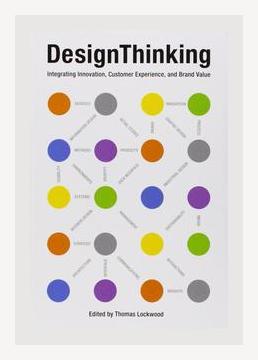Innovation and CreativityDesign Thinking
Here’s a structured and comprehensive summary of the book “Design Thinking” by Thomas Lockwood, focusing on various points and examples, as well as actions readers can take.
Introduction
Thomas Lockwood’s “Design Thinking” explores how the principles of design can transform businesses, innovation processes, and even everyday problem-solving. Rooted in observation, empathy, and prototyping, design thinking diverges from traditional linear and analytical approaches to foster creativity and holistic solutions.
1. Understanding Design Thinking
Major Point:
Design thinking is an approach that combines creative and analytical thinking to solve complex problems.
Example:
Lockwood illustrates design thinking through the story of IDEO, a global design company renowned for its innovative approaches, including the redesign of a more user-friendly shopping cart in just five days using rapid prototyping and user feedback.
Actionable Step:
Adopt a mindset of empathy and observation by spending time understanding your customers’ needs and challenges before starting the design process.
2. Principles of Design Thinking
Major Point:
The key principles include empathy, integrative thinking, optimism, experimentalism, and collaboration.
Example:
Lockwood discusses how healthcare design firm Continuum used empathy to redesign a hospital waiting room to reduce patient stress by including comfortable seating, better lighting, and areas for privacy.
Actionable Step:
Organize a workshop with cross-functional teams to immerse themselves in user scenarios and share their observations and insights.
3. Implementing Human-Centered Design
Major Point:
Prioritizing the human experience at every step ensures that solutions are aligned with real user needs.
Example:
The book mentions how Mayo Clinic incorporated human-centered design by creating a “spiritual space” for patients and families, uncovered through deep interviews and patient shadowing.
Actionable Step:
Engage in deep ethnographic research by spending a day shadowing users in their environment to gather insights directly from their experiences.
4. Collaborative and Iterative Methods
Major Point:
Collaboration and iteration are crucial. Teams should prototype early and often, receiving feedback and iterating their designs.
Example:
Lockwood highlights how Toyota’s innovation process involves continuous collaboration across different departments, fostering a culture of incremental improvements.
Actionable Step:
Initiate weekly brainstorming sessions where team members present their prototypes and gather diverse feedback, rapidly iterating based on the input received.
5. Bridging Business and Design
Major Point:
Design thinking bridges the gap between business strategy and customer needs, aligning organizational goals with user satisfaction.
Example:
Procter & Gamble’s (P&G) rejuvenation under CEO A.G. Lafley is showcased where design thinking catalyzed innovation and market leadership in product categories like Swiffer and Febreze.
Actionable Step:
Integrate design thinking into business strategy discussions: include designers in strategic meetings to ensure user perspectives inform business decisions.
6. Designing for Services
Major Point:
Design thinking isn’t confined to physical products but extends to designing services that enhance user experiences.
Example:
Lockwood describes how Starbucks redesigned its service experience by focusing on the ambiance and customer service, creating a consistent and welcoming experience worldwide.
Actionable Step:
Map out the entire customer journey for your service, identifying pain points and opportunities to redesign moments of interaction for better user experiences.
7. Facilitating Cultural Change
Major Point:
For design thinking to thrive, it must be embedded into the organizational culture, requiring a shift in mindset and processes.
Example:
The book mentions IBM’s transformation wherein promoting design thinking across all divisions led to the establishment of over 60 internal design studios.
Actionable Step:
Start a design leadership program that trains employees at all levels on the principles and practices of design thinking, fostering a culture of innovation.
8. Measuring Impact and Success
Major Point:
It’s crucial to measure the impact of design thinking initiatives through both qualitative and quantitative metrics.
Example:
Lockwood references how Intuit uses customer satisfaction scores alongside usage analytics to evaluate the success of their design thinking projects.
Actionable Step:
Develop a framework for measuring design thinking outcomes, including user satisfaction surveys, engagement metrics, and business performance indicators.
9. Innovating for Sustainability
Major Point:
Design thinking can also drive sustainable innovation by addressing environmental and social challenges through creative solutions.
Example:
Lockwood shares Philips’ development of energy-efficient lighting solutions designed not just to reduce costs but to minimize environmental impact.
Actionable Step:
Form a cross-disciplinary team to brainstorm how your organization’s products or services can incorporate sustainable design principles, reducing environmental footprints.
10. The Role of Leadership
Major Point:
Effective leadership is critical in fostering a design-thinking culture. Leaders must champion design thinking and model the behaviors they wish to see.
Example:
Lockwood discusses how PepsiCo’s CEO Indra Nooyi embraced design thinking, resulting in a holistic rebrand and product redesign that bolstered the company’s market presence.
Actionable Step:
Leaders should actively participate in design thinking workshops and mentor teams, demonstrating their commitment to the process and its importance.
Conclusion
Lockwood’s “Design Thinking” is a seminal work that offers deep insights into how holistic, user-centered approaches can revolutionize innovation across various industries. The actionable steps provided enable individuals and organizations to begin implementing design thinking in practical and impactful ways.
Final Actionable Checklist:
- Empathy and Observation: Spend time with users to understand their needs.
- Cross-Functional Workshops: Regular workshops for sharing and iterating ideas.
- Ethnographic Research: Immersive research to gather direct user insights.
- Rapid Prototyping: Develop and test prototypes quickly and frequently.
- Strategic Integration: Include design thinking in business strategy.
- Customer Journey Mapping: Identify and redesign service touchpoints.
- Leadership Commitment: Model and champion design thinking behaviors.
- Sustainability: Incorporate sustainable design practices.
- Measuring Impact: Develop metrics to assess design thinking outcomes.
By embedding these principles and actions, organizations can drive innovation and create more meaningful, effective solutions through the power of design thinking.
